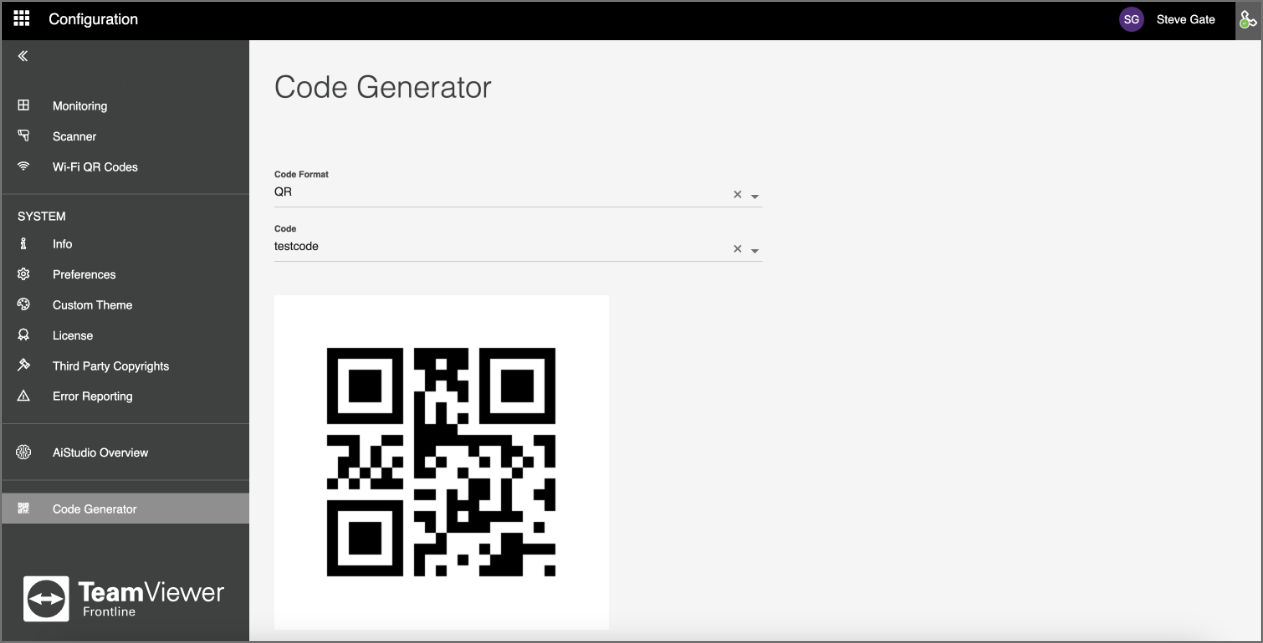The Code Generator feature is used for quick code generation. You just need to enter the respective information and a subsequent code will be generated.

Supported code formats include:
- QR: Quick response, or QR, codes are a two-dimensional version of a barcode. QR codes are able to convey a wide variety of information almost instantly upon scanning them with mobile device.
- Data Matrix: A data matrix is a 2D barcode that encodes data in black and white (or contrasting dark and light cells) arranged in a grid.
- PDF 417: The abbreviation "PDF" stands for portable data file. The "417" part signifies that each pattern in the code consists of 4 bars and spaces in a pattern that is 17 units (modules) long.
- Code 39: CODE 39 is a form of barcode developed by the Intermec Corporation in 1975. Up to 43 characters (incl. numbers), letters, and some symbols can be included in these barcodes.
- Code 93: Code 93 is a barcode symbology to provide higher density and data security enhancement compared to Code 39.
- Code 128: This code is used for alphanumeric or only-numeric barcodes. It can encode all 128 characters of ASCII and, by use of an extension symbol (FNC4), the Latin-1 characters defined by ISO/IEC 8859-1.
- EAN 8: An EAN-8 code is an EAN/UPC symbology barcode and is derived from the longer International Article Number (EAN-13) code. It was introduced to be used on small packages where an EAN-13 barcode would be too large.
- EAN 13: The EAN-13 barcode is used more than any other barcode worldwide. The EAN-13 barcode encodes a GTIN-13 and is used to identify individual items at retail points of sale.
- AZTEC: An Aztec barcode is a scannable matrix barcode and is encoded to store a specific set of data. It uses 2D technology, which means that it can be read horizontally and vertically.
- ITF: ITF-14 is the GS1 implementation of an Interleaved 2 of 5 (ITF) barcode to encode a Global Trade Item Number.
- UPC_A: UPC-A is strictly numeric. The bars can only represent the digits from 0 to 9. A UPC-A barcode contains 12 digits, along with a quiet (blank) zone on either side as well as start, middle, and stop symbols.
- UPC_E: UPC-E is a variation of UPC-A which allows for a more compact barcode by eliminating the extra zeros. UPC-E barcodes is an 8-digit code with number system 0 or 1, which is a shortened version of UPC-A barcode.